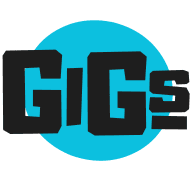6 Steps to Transition Clients from Hourly Billing to Subscription Models
Transitioning clients from hourly billing to subscription models requires a strategic approach backed by industry experts. This article outlines six practical steps to successfully package expertise into repeatable solution products that clients will value on an ongoing basis. Readers will gain actionable insights from professionals who have successfully made this business model shift while maintaining client satisfaction and increasing revenue predictability.
Package Expertise into Repeatable Solution Products
The switch from hourly billing to a retainer model requires you to stop selling your time. You need to productize your service instead. We coached freelancers to package their expertise into a specific, repeatable solution that solves a client's ongoing need.
By doing this, clients stop asking 'how many hours will this take?' and start asking 'what outcome will I receive?'. The client buys a predictable result, not your time.
The most effective way to do this is creating a 'Core Service Product' with a clear menu of deliverables. For example, a 'Monthly Social Media Growth Package' that includes 12 posts, a weekly report, and community management.
Pitch this as a subscription to a valuable service, not as a retainer. This framing gives the client clarity and budget control, making the commitment an easy decision because they know exactly what they get each month.

Focus on ROI Instead of Hours
Shifting client focus from hourly rates to overall return on investment highlights the true value of services rather than the time spent delivering them. This approach reframes the conversation around business outcomes such as increased revenue, time saved, or problems solved instead of hourly cost calculations. Clients benefit from this perspective by understanding how the investment contributes to their business goals rather than viewing services as an expense to minimize.
Case studies and metrics that demonstrate tangible results help hesitant clients recognize the value beyond hourly work tracking. Start gathering specific examples of client success stories with measurable outcomes to showcase the real value your services provide.
Standardize Deliverables for Consistent Client Experiences
Standardizing deliverables ensures consistent client experiences across all subscription members regardless of which team members handle their work. This standardization creates scalable processes that maintain quality while allowing the business to grow without requiring constant owner involvement in delivery. Documentation of standard operating procedures for each deliverable enables team members to produce reliable results that meet client expectations every time.
Service standardization also makes onboarding new team members more efficient by providing clear guidelines for expected outputs and quality benchmarks. Begin documenting your most common client deliverables and creating templates that ensure consistent quality for every subscriber.
Start with Loyal Clients as Proof
Starting subscription transitions with loyal anchor clients establishes proof of concept before wider implementation. These established relationships provide valuable feedback on subscription structure while posing less risk due to existing trust and understanding of service value. Anchor clients can become powerful advocates when they experience the benefits of predictable billing and enhanced service delivery firsthand.
Their testimonials and case studies become essential marketing tools when approaching other clients about similar transitions. The success stories generated during this pilot phase address common objections other clients might raise during later conversion attempts. Reach out to several long-term clients today to discuss testing a subscription approach with their accounts.
Offer Hybrid Billing as Transition Strategy
Implementing a graduated migration strategy with hybrid billing options eases the transition for clients who might be hesitant to completely abandon familiar hourly billing models. These transitional approaches might combine a base subscription for core services plus hourly billing for additional work that falls outside standard scope. The hybrid approach reduces perceived risk for clients while introducing them to the benefits of subscription components like predictable billing and priority service.
Over time, clients typically become more comfortable with expanding the subscription portion as they experience improved service delivery and budget predictability. Consider which of your current hourly clients might benefit from a hybrid approach and propose a transitional model to them this month.
Create Value Tiers with Escalating Benefits
Creating clear value tiers with escalating benefits helps clients understand exactly what they're getting at each subscription level. These tiers should outline specific deliverables, response times, and additional perks that increase with higher-tier subscriptions. Well-designed tiers create natural upgrade paths as clients grow and their needs expand beyond basic service levels.
The focus should be on packaging services in ways that solve specific client problems rather than simply bundling hours. Transparent value tiers also reduce confusion during sales conversations by giving prospects clear choices instead of custom quotes. Take time to map out compelling tier structures that showcase your most valuable offerings and make the benefits immediately obvious to potential subscribers.

